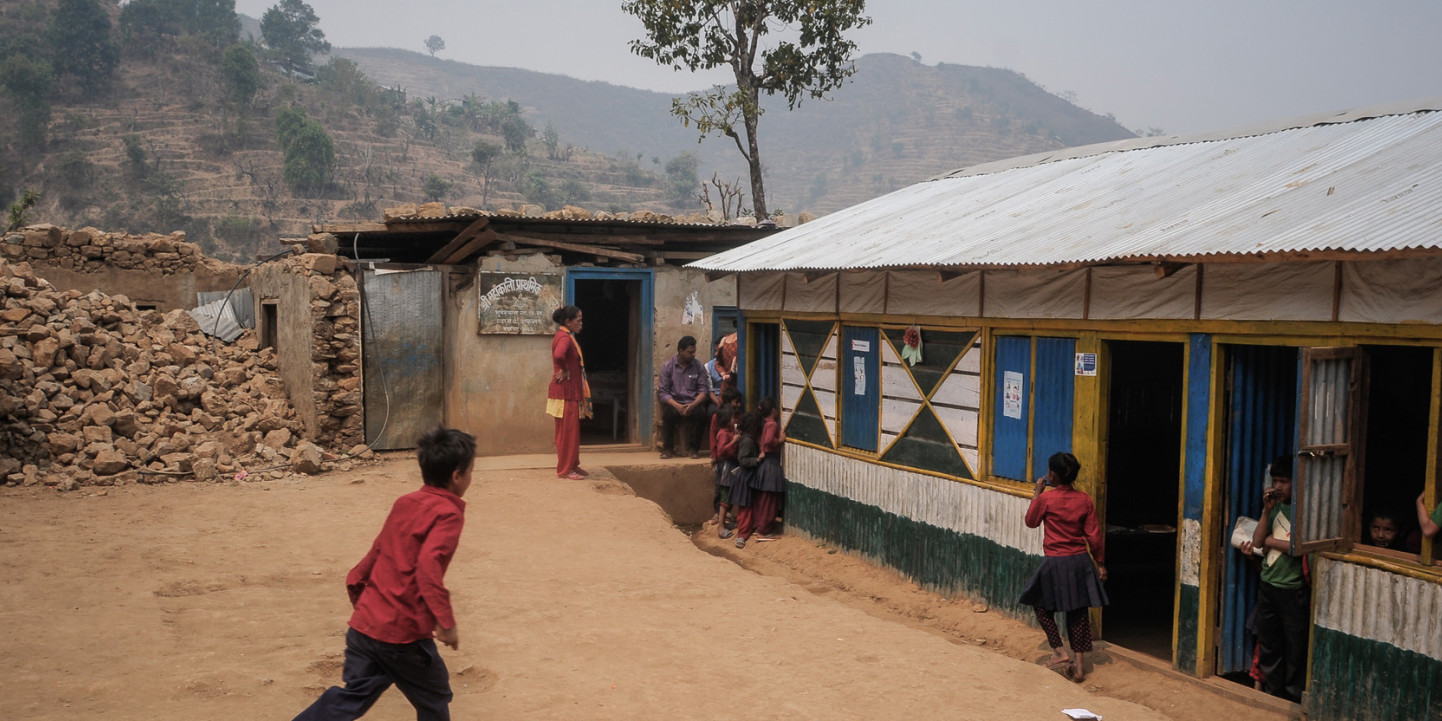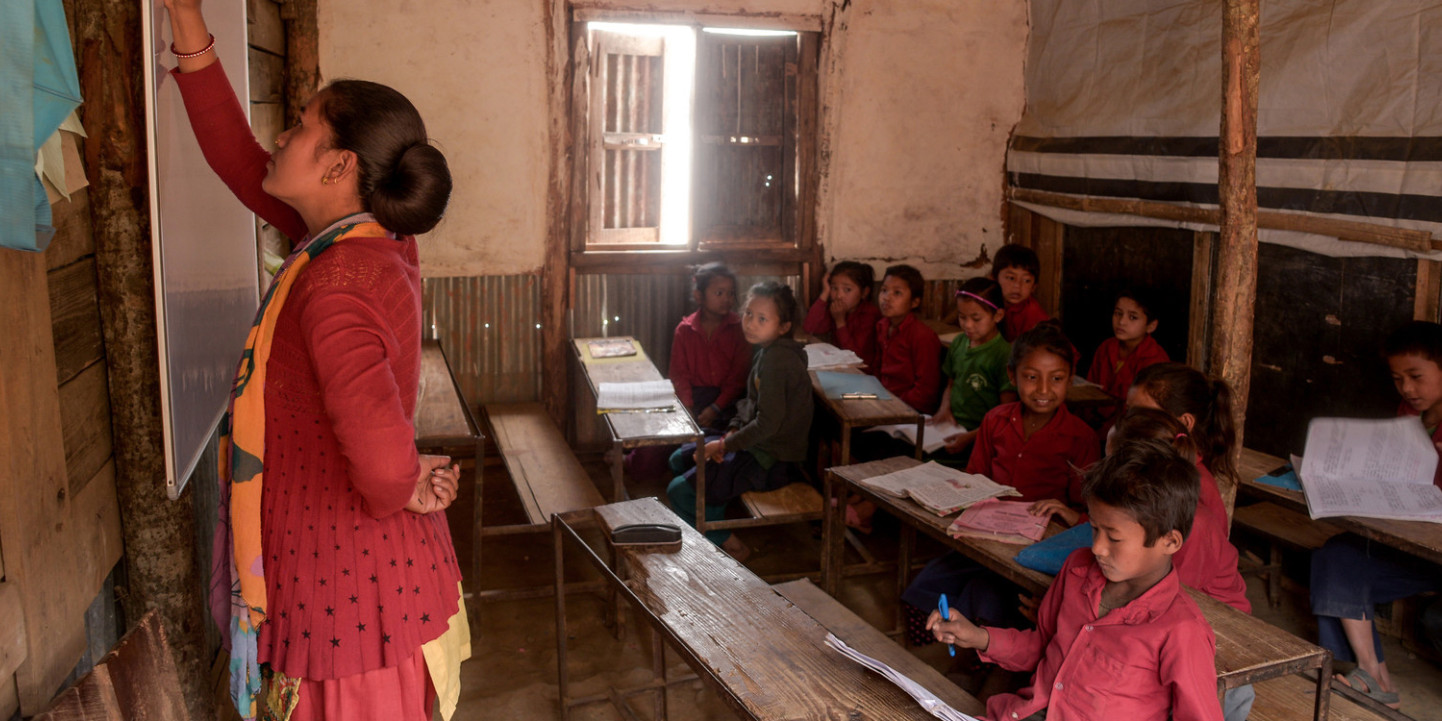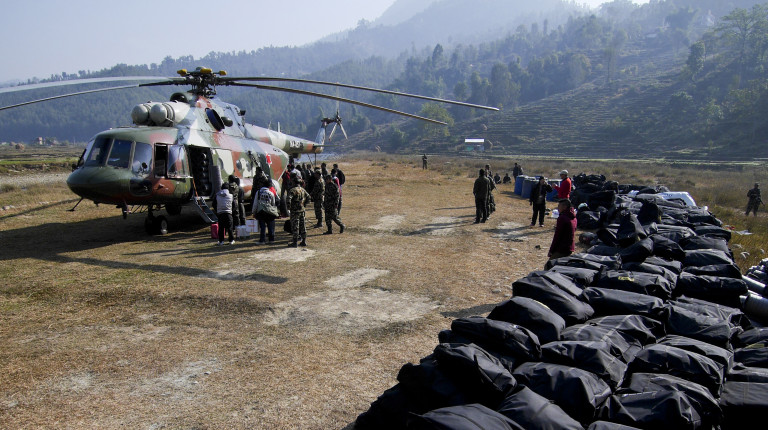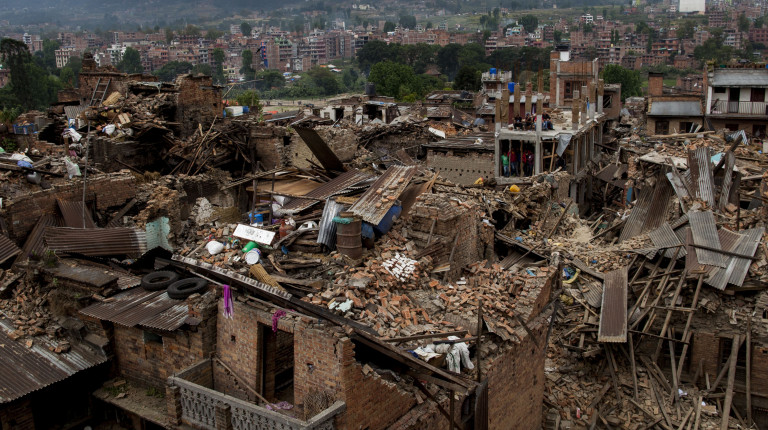How TLC keeps kids in Nepal safe, one year after the quake
Sarita, a girl with an infectious smile, felt all her joy and laughter drain away as she looked at the crushed remains of her school.
You can imagine her sinking feeling as she saw her future lying among the splintered wood and crushed stone. How would she go to school? What would she do for a livelihood? How could she help her community?
All you need is TLC
In the past year since the quake, Save the Children has responded to children’s urgent education needs - thanks to donors - with some “TLC.”
And in this case, we’re talking about a very specific and effective kind of TLC, or a “Temporary Learning Centre.”
What are TLC’s? They are places for kids to keep learning while their new schools are being built. Made from bamboo and tin, they are highly earthquake-resistant compared to buildings made of brick and clay.
Also, before the TLC was built in Sarita’s district, students had to sit on hard ground under a tarp, which didn’t protect them from heavy rains. Now, Sarita goes to a TLC, where she’s not only protected from the elements but gets a great deal of tender loving care. For example, the teachers provide psychosocial support to students to minimise trauma. They use art therapy to help children express their feelings in a joyful environment.
Learning at a TLC makes Sarita feel so much more at ease and able to focus on her studies. She now feels safe and warm in the TLC. She also loves being in a classroom, where she gets to be with her friends and play games. This means that, thanks to donors like you, Sarita has a semblance of a normal life.
Why is education part of our emergency response?
Education keeps students and communities healthy. A normal routine makes children less stressed, which decreases their chances of suffering from anxiety or depression. In fact, research has shown that education is linked with improved health and reduced mortality risks.
This means that education is an essential way for a community to maintain its health. It also means that, without schools and education, communities in Nepal have little hope to stay vital or to develop.
How education NOW leads to FUTURE community health
Save the Children has made classrooms a priority because education is so important to a community’s long-term recovery.
It may seem unimaginable for students to keep going to school after a disaster hits, but, thanks to support from our donors, Save the Children and its partners were able to build 586 TLCs in nine of the most severely affected districts in the past year to keep these students learning.
Donors have provided education materials, teaching-learning kits, and back-to-school bags to children who lost their school supplies in the earthquake, providing direct support to over 193,000 children like Sarita. What does this number mean? That we’ve made incredible and effective progress, but we still have work to do to reach many other children in the country who need help to stay in school.
What did we learn?
We know that responding within the first 24 hours is essential to saving children’s lives. When the quake struck Nepal our staff were already trained in humanitarian response, they had planned for an emergency just like this.
We had prepositioned stocks in four locations in Nepal, including Kathmandu. This proved to be life-saving for many in the aftermath of the disaster. With proper planning our staff were able to launch an immediate response that was critical to saving lives within the first 24 hours after the earthquake.
Being prepared is critical to saving lives during an emergency. The sooner we respond the more lives we can save.
We urgently need your help to make sure that staff are trained in humanitarian response so they are ready to be deployed and get prepositioned aid in areas at risk of natural disasters in key locations across Asia and the Pacific. Without prepositioned aid, Sarita and many more children like her would not have had the help they needed to survive and recover from the quake. Without staff who are trained and prepared to respond to emergencies, they may never have survived.
With the help of monthly donors Save the Children will continue to work in this vital area, protecting communities at risk of disaster and training staff for these vital humanitarian programmes. But we can’t do it without your help.






